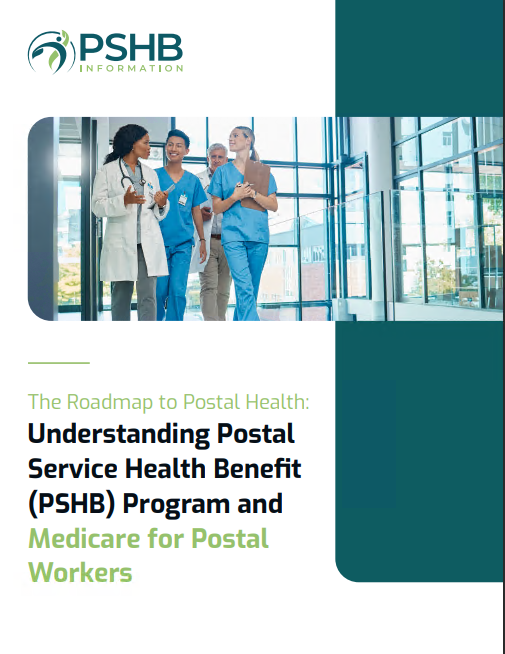Key Takeaways
-
The Postal Service Health Benefits (PSHB) Program promises to modernize federal healthcare options for USPS employees and retirees starting in 2025.
-
Proactive preparation and understanding the transition details are essential to fully benefit from this healthcare update.
A Healthcare Overhaul for USPS Employees
Change is on the horizon for USPS employees, retirees, and their families. The Postal Service Health Benefits (PSHB) Program is poised to revolutionize federal employee healthcare starting in 2025, replacing the Federal Employees Health Benefits (FEHB) program. The new PSHB program is exclusive to the postal workforce and aims to address their unique needs while maintaining comprehensive and affordable healthcare options.
Why the PSHB Program Stands Out
The transition from FEHB to PSHB isn’t just a swap of programs; it’s a strategic move designed to provide better healthcare tailored to USPS employees. Here’s what makes PSHB unique:
Tailored for Postal Workers
Unlike FEHB, which serves all federal employees, PSHB focuses solely on the postal workforce. This exclusivity allows plans to be specifically aligned with USPS employees’ needs and work environments.
Medicare Integration
For the first time, Medicare-eligible retirees and their dependents must enroll in Medicare Part B to retain PSHB coverage. This integration is expected to enhance benefits and reduce out-of-pocket costs by combining coverage resources.
Streamlined Options
PSHB offers a range of plans similar to FEHB, but with adjustments to premiums, deductibles, and provider networks that better cater to USPS employees and their families.
Who’s Affected by the Transition?
The PSHB transition impacts several groups within the USPS community. Let’s break it down:
-
Current Employees: If you’re enrolled in FEHB, you’ll be automatically transitioned to a corresponding PSHB plan. However, it’s still essential to review your options during Open Season.
-
Retirees: Medicare-eligible retirees must enroll in Medicare Part B to maintain their PSHB coverage, unless exempt due to retirement prior to 2025.
-
Family Members: Eligible dependents will also transition to PSHB plans. Ensure they meet the necessary requirements, particularly for Medicare enrollment if applicable.
Understanding your category and the associated requirements ensures you’re ready for the switch.
Important Deadlines You Can’t Miss
As the PSHB implementation approaches, key dates will play a pivotal role in your preparation:
-
Open Season (November 11 – December 9, 2024): This is the time to review your options, compare plans, and make adjustments for the upcoming year.
-
Medicare Enrollment for Retirees: Eligible retirees turning 65 in 2025 or later must enroll in Medicare Part B during their Initial Enrollment Period to maintain PSHB coverage.
-
Plan Activation: Any changes you make during Open Season will take effect on January 1, 2025.
Staying on top of these deadlines ensures a smooth transition without disruptions to your coverage.
Medicare and PSHB: The New Partnership
The PSHB program’s integration with Medicare is one of the most talked-about aspects of this transition. Here’s what you need to know:
Who Needs Medicare Part B?
-
Medicare-eligible retirees and their dependents under PSHB must enroll in Part B starting in 2025. This includes new retirees and current beneficiaries turning 65.
-
Exceptions apply to those who retired before January 1, 2025, and are not already enrolled in Medicare Part B.
Benefits of Combining Medicare and PSHB
-
Expanded Coverage: By coordinating PSHB with Medicare, you gain access to a broader network of providers and services.
-
Lower Costs: Medicare can significantly offset out-of-pocket expenses, especially for hospital and outpatient services.
Failing to meet Medicare requirements could result in the loss of PSHB coverage, so it’s crucial to take action.
What Does PSHB Cost?
Understanding the financial impact of PSHB is key to budgeting effectively. Here are the major components:
Premiums
The government will continue to cover a significant portion of your health insurance premiums, as with FEHB. However, exact costs will vary depending on the plan you choose.
Deductibles and Out-of-Pocket Costs
Different plans come with different deductibles and copayment structures. Selecting a plan that matches your healthcare usage is vital for managing expenses.
Medicare Part B Premium
For retirees required to enroll in Medicare Part B, the monthly premium for 2025 will be $185. Be sure to include this in your overall healthcare budget.
Open Season: Your Annual Opportunity
Open Season is your chance to make informed decisions about your health coverage. Here’s how to maximize it:
-
Review Your Current Coverage: Take stock of your healthcare needs and decide if your existing plan still works for you.
-
Compare PSHB Plans: Use tools and resources provided by USPS and the Office of Personnel Management (OPM) to evaluate plan options.
-
Enroll or Update: If you need to make changes, ensure they’re completed before Open Season ends on December 9, 2024.
Proactive participation in Open Season ensures you’ll start 2025 with the best coverage for your needs.
How to Choose the Best Plan for You
Selecting the right PSHB plan might feel overwhelming, but a step-by-step approach can simplify the process:
-
Assess Healthcare Needs: Consider how often you visit the doctor, any ongoing treatments, and your prescription medication requirements.
-
Evaluate Costs: Compare premiums, deductibles, and out-of-pocket maximums for different plans.
-
Check Provider Networks: Ensure your preferred doctors and hospitals are included in the plan’s network.
-
Factor in Medicare: If you’re eligible, think about how Medicare Part B will integrate with your PSHB coverage.
Taking these steps ensures your plan choice aligns with your health and financial goals.
Addressing Common Concerns
Here are answers to some of the most frequently asked questions about the PSHB transition:
What Happens to FEHB?
FEHB plans will no longer be available to USPS employees and retirees after 2024. All eligible participants will transition to PSHB plans.
Can I Keep My Current Doctors?
This depends on the provider network of your chosen PSHB plan. Review plan details carefully to confirm coverage for your preferred providers.
What Happens If I Don’t Enroll in Medicare Part B?
If you’re required to enroll and fail to do so, you risk losing your PSHB coverage. It’s essential to meet the Medicare enrollment deadlines.
Understanding these answers can alleviate concerns and help you approach the transition with confidence.
Staying Informed About PSHB
Being well-informed is your best strategy for a successful transition to PSHB. Here’s how to stay updated:
-
Attend Informational Sessions: USPS and OPM may offer webinars and Q&A sessions about the PSHB program.
-
Check Official Websites: Regularly visit USPS and OPM sites for updates, resources, and tools.
-
Reach Out for Help: Contact HR representatives or plan administrators if you have questions about your coverage.
By staying engaged, you can make confident decisions and avoid potential pitfalls.
Embracing a Better Healthcare Future
The transition to the Postal Service Health Benefits Program represents a significant improvement in federal employee healthcare. With tailored plans, Medicare integration, and comprehensive options, PSHB is designed to meet the unique needs of USPS employees and retirees. By understanding the changes, preparing for Open Season, and staying proactive, you can ensure your health coverage is ready to support you in 2025 and beyond.







